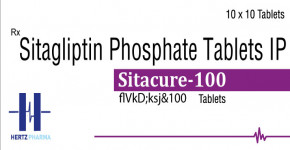 Launch apps instantly. Claim $200 credits on DigitalOcean
Launch apps instantly. Claim $200 credits on DigitalOcean
Before and After Pest Control Treatment: A Comprehensive Guide
Written by Aditya Pandey » Updated on: April 12th, 2024

Introduction:
Pest control treatment is essential for maintaining a pest-free environment in your home or workplace. Whether you're dealing with ants, rodents, cockroaches, or other pests, proper preparation before treatment and diligent follow-up afterward are crucial for maximizing the effectiveness of the pest control measures. In this guide, we'll outline the steps you should take both before and after pest control treatment to ensure optimal results.
Before Pest Control Treatment:
Identify the Pest: Determine the type of pest infestation you're dealing with. Different pests may require different treatment methods, so accurate identification is essential for effective pest control.
Clean and Declutter:
Prior to the pest control treatment, thoroughly clean and declutter your home or workspace. Remove clutter, food crumbs, and other potential hiding spots for pests. Vacuum carpets, sweep floors, and wipe down surfaces to eliminate food sources and make it easier for the pest control professional to access problem areas.
Store Food and Pet Items:
Securely store food items, dishes, and pet food in airtight containers or cabinets. Remove pet bowls and litter boxes from areas to be treated, and cover or remove aquariums to prevent contamination.
Seal Entry Points:
Seal off any cracks, gaps, or openings in walls, windows, doors, and utility lines where pests may enter your home. Use caulk, weather stripping, or sealant to close gaps and create a barrier against pests.
Prepare Outdoor Areas:
Trim vegetation and shrubs around the perimeter of your home to reduce hiding spots for pests. Clear debris and remove standing water from gutters and drains to eliminate potential breeding grounds.
After Pest Control Treatment:
Follow Instructions: After the pest control treatment, carefully follow any instructions provided by the pest control professional. These may include recommendations for ventilation, re-entry times, and precautions to take during and after treatment.
Keep Children and Pets Away:
Keep children and pets away from treated areas until it is safe to re-enter. Follow any specific guidelines provided by the pest control professional to ensure their safety.
Ventilate Treated Areas:
Open windows and doors to ventilate treated areas and allow any residual chemicals to dissipate. Use fans or air purifiers to help circulate air and speed up the process.
Clean Thoroughly:
Wait until the recommended re-entry time has passed, then thoroughly clean and sanitize treated areas. Wipe down surfaces, vacuum carpets, and mop floors to remove any residues left behind by the pest control treatment.
Monitor for Pests:
Keep an eye out for any signs of pest activity in the days and weeks following the treatment. If you notice any pests or signs of infestation, contact the pest control professional for follow-up treatment or additional recommendations.
By taking these steps before and after pest control treatment, you can help ensure the effectiveness of the treatment and maintain a pest-free environment in your home or workplace. Remember to consult with a qualified pest control professional for personalized advice and recommendations tailored to your specific pest control needs.
Conclusion:
Effective pest control treatment requires careful preparation before and diligent follow-up afterward to ensure optimal results. By taking proactive steps both before and after the treatment, you can maximize the effectiveness of the pest control measures and maintain a pest-free environment in your home or workplace.
Before the pest control treatment, it's essential to identify the type of pest infestation, clean and declutter the area, store food and pet items securely, seal entry points, and prepare outdoor areas. These preparations create an environment that is conducive to effective pest control and help the pest control professional target problem areas more efficiently.
After the pest control treatment, it's important to follow any instructions provided by the pest control professional, keep children and pets away from treated areas, ventilate treated areas to dissipate residual chemicals, clean thoroughly to remove any residues left behind, and monitor for signs of pest activity in the days and weeks following the treatment.
By following these steps, you can ensure that the pest control treatment is as effective as possible and minimize the risk of future pest infestations. Remember to consult with a qualified pest control professional for personalized advice and recommendations tailored to your specific pest control needs, and address any concerns or questions you may have about the treatment process. With proper preparation and follow-up, you can say goodbye to pests and enjoy a pest-free environment in your home or workplace.
Copyright © 2024 IndiBlogHub.com Hosted on Digital Ocean









Post a Comment
To leave a comment, please Login or Register